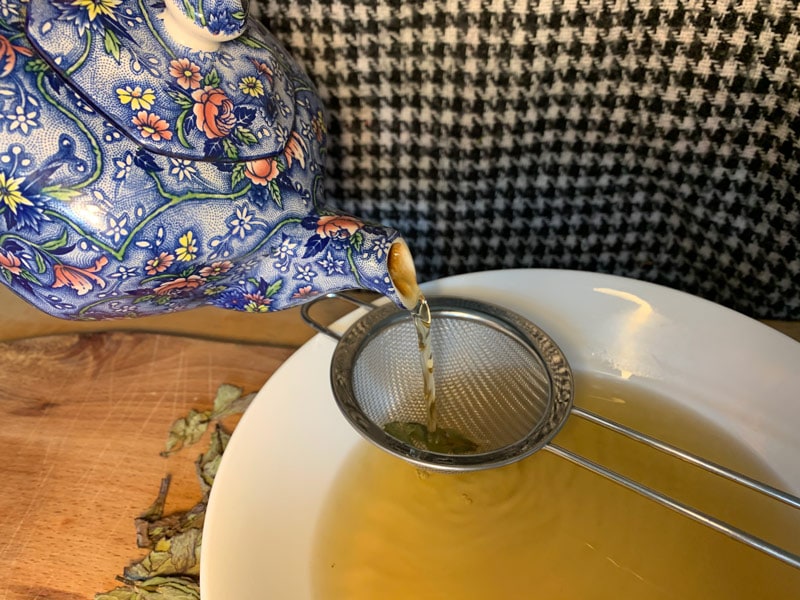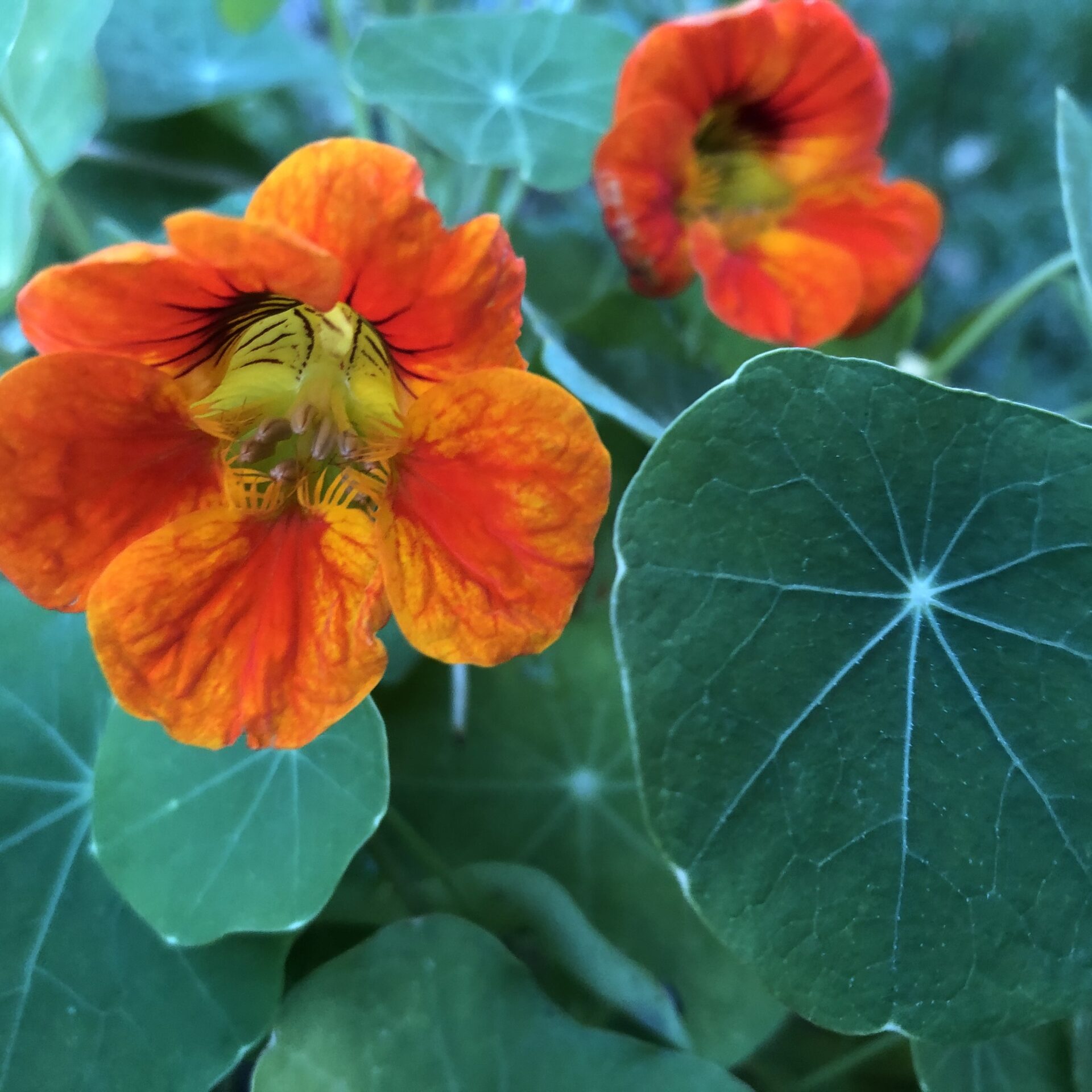It can feel like you actually have glass in your eye when an infection first sets in. Herbal First Aid Solutions for Eye Infections is part of our first aid series, and we’ll look at what is actually going on with different types of eye infections and how herbs can support them.
Travelling on the road and wearing contact lenses, we are all too familiar with how easily an eye infection can take hold. There are actually different forms of eye infection categorised by the location and often caused by different microbes. Untreated long-term eye infections can be extremely dangerous so fast action is needed and perseverance.
Many conditions have -itis on the end of their name. This indicates that there is inflammation present in the condition which is pretty universal when it comes to eye infections. The eyes are extremely sensitive and will become inflamed easily.
Common eye conditions that you may experience include:
1. Conjunctivitis – also known as pink eye
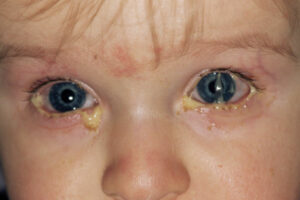 Conjunctivitis is commonly due to an infection, although this isn’t always the case. Children frequently get it, and it can be very contagious. It can create the green or yellowing hunk in and around the eye and even have clear yellow exudation that sticks the eyelids shut together in the morning. In most cases, this condition isn’t serious and can easily be treated at home.
Conjunctivitis is commonly due to an infection, although this isn’t always the case. Children frequently get it, and it can be very contagious. It can create the green or yellowing hunk in and around the eye and even have clear yellow exudation that sticks the eyelids shut together in the morning. In most cases, this condition isn’t serious and can easily be treated at home.
There are several types of conjunctivitis, and they can be broadly categorized into infectious and non-infectious forms:
- Infectious Conjunctivitis:
- Viral Conjunctivitis: Caused by viruses, often the same viruses that cause the common cold. It is highly contagious and can spread through respiratory droplets or by touching surfaces contaminated with the virus.
- Bacterial Conjunctivitis: Caused by bacteria, most commonly Staphylococcus aureus or Streptococcus pneumoniae. Bacterial conjunctivitis can result from an eye infection or secondary to an upper respiratory infection.
- Non-Infectious Conjunctivitis:
- Allergic Conjunctivitis: Triggered by allergens such as pollen, dust, or pet dander. It is not contagious.
- Irritant Conjunctivitis: Caused by irritants like smoke, chemicals, or foreign bodies coming into contact with the eyes.
2. Stye
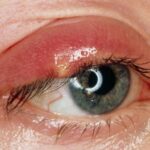 This is a bump on the eyelid that happens when bacteria from your skin get into the hair follicle of an eyelash. The duct becomes blocked and a build up occurs in the line of the eyelid. A stye usually appears as a red sore lump on the eyelid or under the eye. A stye can be pus filled in which case it will show a white pin head on the lump.
This is a bump on the eyelid that happens when bacteria from your skin get into the hair follicle of an eyelash. The duct becomes blocked and a build up occurs in the line of the eyelid. A stye usually appears as a red sore lump on the eyelid or under the eye. A stye can be pus filled in which case it will show a white pin head on the lump.
3. Blepharitis
This occurs when there is inflammation of the eyelids. This is the one that can really feel like glass is in the eye. Eventually it will appear as flaky skin on the eyelids. Causes include bacterial infection, allergic reaction, clogged oil glands in the eyelids, and some skin conditions such as eczema.
There are other causes of ‘eye infection’ such as herpes – both the virus that causes cold sores and that causes chickenpox and shingles. These can affect the nerves and skin around the eyes and be very painful. We are focusing more on bacterial infection.
Common Healing Herbs for Eye Infections
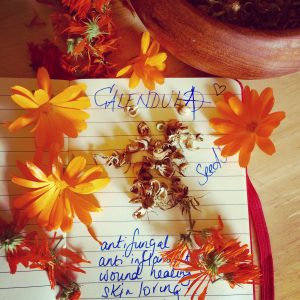 Calendula (Calendula officinalis)
Calendula (Calendula officinalis)
The beautiful Calendula, or Marigold, has antimicrobial and anti-inflammatory properties, which means it has the potential to prevent the growth of certain microorganisms that can cause infections. When applied to the skin, it has a soothing effect, which makes it beneficial for irritated eyes and can help the body recover from the infection more effectively. Calendula-infused eyewashes or compresses can help cleanse the eye area and provide relief from discomfort.
Chamomile (Matricaria chamomilla)
The gentle and calming nature of chamomile makes it a well-suited home remedy for the eyes. Known for its anti-inflammatory compounds, including chamazulene and bisabolol, it can help to reduce redness, swelling, and irritation that often accompany eye infections. It can be used in the form of chamomile tea or infused water as a compress to aid removing debris, discharge, or irritants that could make an infection worse.
Lavender (Lavandula angustifolia)
Lavender too has anti-inflammatory and antiseptic properties that could help reduce swelling and discomfort around the eyes. Lavender-infused warm compresses, washes or diluted lavender essential oil applied around the eyes can provide a calming sensation associated with eye problems. In addition, when applied externally, it might aid in the regeneration of damaged tissues, supporting the body’s ability to recover from an infection.
Eyebright (Euphrasia)
Eyebright is an herb that has been traditionally used in natural medicine for various eye conditions, including eye infections and eye discomfort, such as conjunctivitis. Eyebright can be used in various forms, including eye drops, tinctures, and teas. Packed with full antioxidant, anti-inflammatory and antimicrobial properties, it’s able to kill off many bacterial strains that can cause an eye infection.
Home Herbal Treatments for Eye Infections
External Preparations:
Chamomile Compress:
- Chamomile has anti-inflammatory properties that may help reduce redness and irritation. Brew a chamomile tea, let it cool, and then use a clean cloth to apply a chamomile compress to closed eyelids for 15-20 minutes.
Calendula Eyewash:
- Calendula, or marigold, has antibacterial and anti-inflammatory properties. Prepare a calendula eyewash by infusing dried calendula flowers in warm water. After straining, use an eyedropper to apply a few drops of the solution to the infected eye.
Aloe Vera Gel:
- Pure aloe vera gel can have a soothing effect on irritated eyes. Apply a small amount of the gel around the eyes, avoiding direct contact with the eyeball. Ensure it is pure and free from additives.
Fennel Tea Compress:
- Fennel has anti-inflammatory properties and can be used to make a soothing eye compress. Brew fennel tea, let it cool, and apply it to closed eyelids using a clean cloth.
Euphrasia (Eyebright) Eye Wash:
- Eyebright is traditionally used for various eye conditions. Prepare an eyebright eyewash by infusing dried eyebright in warm water. After straining, use an eyedropper to apply a few drops of the solution to the infected eye.
Rosewater Soothing Mist:
- Rosewater is known for its soothing properties. Fill a spray bottle with pure rosewater and mist it over closed eyelids to help reduce irritation.
Internal Preparations:
- Bilberry (Vaccinium myrtillus): Bilberry contains compounds called anthocyanins, which are antioxidant and support eye health, particularly the retina.
- Eyebright (Euphrasia officinalis): Eyebright is anti-inflammatory and also has astringent properties beneficial for eye health.
- Turmeric (Curcuma longa): anti-inflammatory and antioxidant
- Ginger (Zingiber officinale): Ginger is anti-inflammatory
- Omega-3 Fatty Acids: While not an herb, omega-3 fatty acids found in fish oil or flaxseed oil are often associated with eye health supporting the structure and function of the eyes.
How to apply herbs for eye infections
Regardless of whether it’s conjunctivitis, a stye or blepharitis, regular warm bathing with herbal washes is essential. We always use a base of calendula and chamomile tea. The calendula is lymphatic and healing, the chamomile is anti-inflammatory and anti-microbial. If we have it we also add some lavender flowers to this base as a bit of extra anti-inflammatory and anti-infective actions.
 We brew the infusion for around 5-10 minutes, filter through sterilised muslin and add a couple of drops of propolis or myrrh tincture to it.
We brew the infusion for around 5-10 minutes, filter through sterilised muslin and add a couple of drops of propolis or myrrh tincture to it.
We keep this mix in a sterilised pot for the day and use clean cotton pads for each wiping of the eyes. The eyes need to be wiped/cleansed several times over the day to really keep on top of it. For a stye, we use warm tea each time to help soften the tissue to reduce and encourage a de-blocking of the ducts.
This needs to be carried on for several days until it feels like the infection has totally subsided.
We also have to consider what has led to the infection, is the immune system feeling low, is there stress? What else might need addressing, such as eating the right food, to avoid repeat infections?
Always remember that individual reactions to herbs can vary, so it’s a good idea to perform a patch test. Additionally, washing your hands before touching your eyes and avoiding rubbing your eyes can contribute to preventing further irritation or spread of infection.
Don’t stop reading yet…!
Have you got the right remedy in your first aid kit to deal with any common accidents in the home?
Our First Aid E-guide has you covered for anything from hayfever to headaches, bruising to bug bites….and so much more!
We dive deep into symptoms and herbal remedy recipes so you can feel confident and build a better relationship with health and safety in the home.

